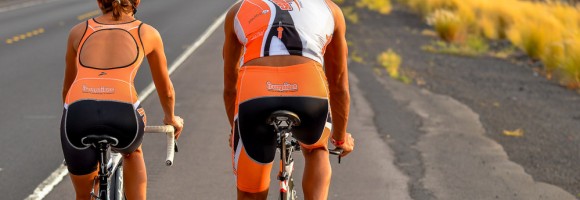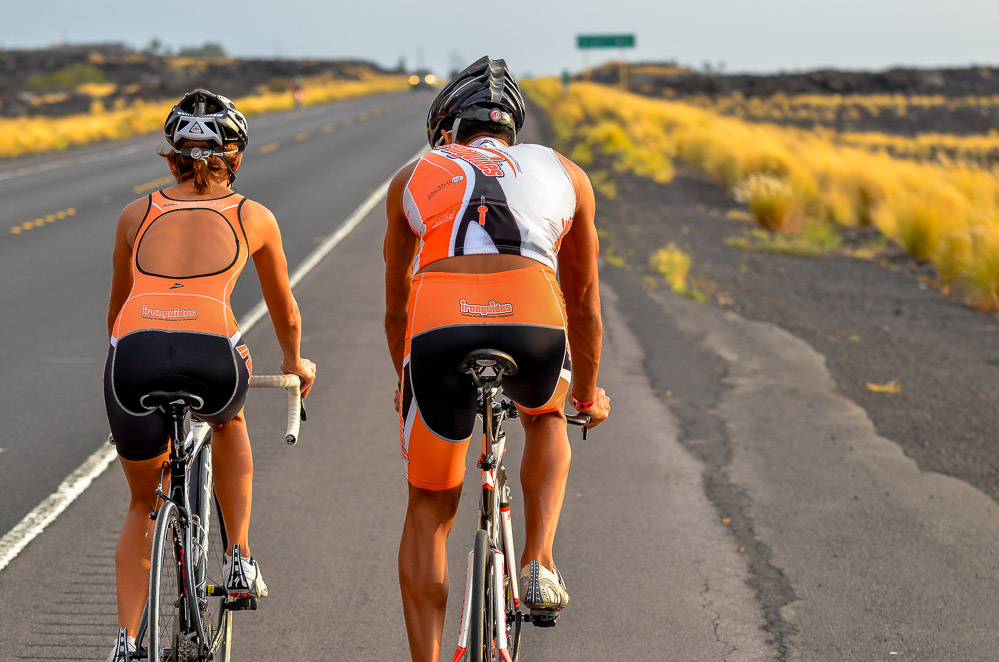IRONMAN PERFORMANCE – KONA
Preparing for an Ironman event requires a great deal of training and preparation just to get to the finish line, for some of us though our goals go way beyond finishing and more so looking for performance and being competitive.
Once we move away from finishing being a goal to being competitive we need to start looking more closely at the dynamic of the race itself – see what is happening and how to be successful. For the performance athlete Kona is always going to be the big goal and i want to look at how we can manipulate training in order to get the most from the event.
So first step always has to be to break down the race and look at what is happening.
SWIM
The swim in Kona is very, very important, athletes not coming out in the main group are at a significant disadvantage and rarely make it back into the race unless they are special riders, even in this instance the effort required to get back into the race can significantly affect the later part of the race. The race tends to have 1-2 great swimmers off the front and then 2 main lead packs that tend to come together early into the bike.
BIKE
The ride in Kona is intense for the first hour – looking at power data from previous years the athletes are riding close to Olympic distance intensity early on to get position in the leading group. The race then tends to settle down to a more conservative pace until the strong riders start to stamp their authority around the 80- 90km part of the course. Historically the strong riders have distanced themselves from the packs over the last 90km and big margins tend to open up at this point.
RUN
As with the bike the run starts fast and a little above typical Ironman pace – the combination of athletes willing to take risks for the big win and also having to chase down the leading cyclists coupled with the crowd support along the road for the first 10 miles make this part of the race exciting and easy to get carried away and go too fast. At 10 miles the athletes move inland and leave the crowds – around this time is when the effort hits the body and coupled with sudden isolation leads to many break downs – athletes need to have a mental plan in place for this point in the race – this is where the race really starts for the top athletes looking to win.
Tailoring the training program for the event
While there are fundamental sessions and structure that need to be in place for an Ironman race we can tweak the program and the build structure in order to be prepared for what is going to happen come race day. When doing this the last 6 weeks are always going to be the most important period. I have talked about taper in previous articles so not really looking at that aspect here more on the balance of training.
SWIM
Due to the fact the first hour of the bike is going to be so intense it is even more important than normal to have great swim fitness – we need to swim fast but also leave the water fresh and ready to go hard on the bike. I like to keep the swim program fairly consistent through the 6 weeks with 2 key sessions per week – a long interval session in the region of 60×100 – 40x @ Ironman effort followed by some above pace intervals and then a long open water swim ranging from 75min to 2 hours depending on the athlete. This long open water swim plays a critical role come race day.
BIKE
The bike is going to be intense and the training has to reflect this or else the athlete is going to blow up very early and be unable to recover. I will always be looking for the performance athlete to have great sprint distance bike speed before hitting the 6 weeks out from race day.
The bike program will change over the 6 weeks unlike the swimming which is very consistent – I will be looking to ramp up the endurance during the 6 weeks and move from threshold work and long rides at the start of the period to more race pace efforts and very intense short intervals coupled with long super easy rides in the final weeks. The reason I do this is we want bike to be peaking on race day as this is where the race is really decided – maybe not position off the bike but position off the bike for sure!! The structure of the bike is also looking closely at the run program.
RUN
No question at all that Kona is decided on the run, I think a lot of athletes see this fact and the focus then comes to the run especially in the final weeks – a big mistake in my opinion and a lot of performances reflect this. We tend to see a lot of great athletes come into Kona too skinny – off their game on the swim and bike and then just looking too tired to
really run to their potential. We hear every year how different Kona is to any other race and how you need to learn how to race there – I think the problem is athletes simply look at the past results and see the run as too important and run too much and destroy their race before they even start.
BIKE / RUN balance
When planning the final 6 weeks I want the focus of the first 3 week to be the run – specific race pace sessions and the highest volume of the whole training year should be at this point. So much running will always lead to a slight loss of power on the bike and also effect swim times to a degree – this can cause a lot of mental stress to the athlete at a time they expect to be feeling in the best shape of their life – important to know this is going to happen and all part of the cycle.
As we head into the final 3 weeks the run volume starts to come down – we still maintain race pace sessions and add in a little short intensity session but the general volume of run comes way down to allow the body to recover and to bring back bike power and swim speed. In this final 3 weeks the bike volume will increase and this will become the focus of fitness leading into the race.
A big factor for Ironman is mental strength and this program takes this into account – some athletes feel smashed and believe they need rest when training hard and this rest from endurance work just reduces their fitness and effects performance – by reducing the run and getting fitness on the bike we maintain fitness and refresh brain so we are ready to go deep on race day.
Following this structure an athlete can go into the race knowing they will swim well and be fresh and ready to bike hard. With having a solid volume of training all the way through to the race the athlete is going to cope well with endurance and the run will take care of itself!!
Enjoy your training!
Coach Alun “Woody” Woodward
ironguides is the leading Lifestyle Facilitation company for athletes of all abilities. We provide coaching and training services, plans and programs, as well training education, health and fitness products to help you learn and live a healthy lifestyle. Come get fit with one of our monthly training subscriptions, event-specific training plans, coaching services, or a triathlon training camp in an exotic location! ironguides also provides Corporate Health services including Corporate Triathlons, Healthy Living retreats and speaking engagements. At ironguides, your best is our business!
Train with ironguides!
Personalized Online Coaching: Starting at USD190/month
Monthly Training plans (for all levels, or focused on one discipline): Only USD39/months
Event based training plans:
Sprint Distance (USD45 for 8-week plan)
Olympic Distance (USD65 for 12 week plan)
Half Ironman (R$95 for 16-week plan)
Ironman (USD145 for 20-week plan)
X-Terra (USD65 for 12-week plan)
Running Plans (10k, 21k and 42k – starting at USD40)



Recent Comments